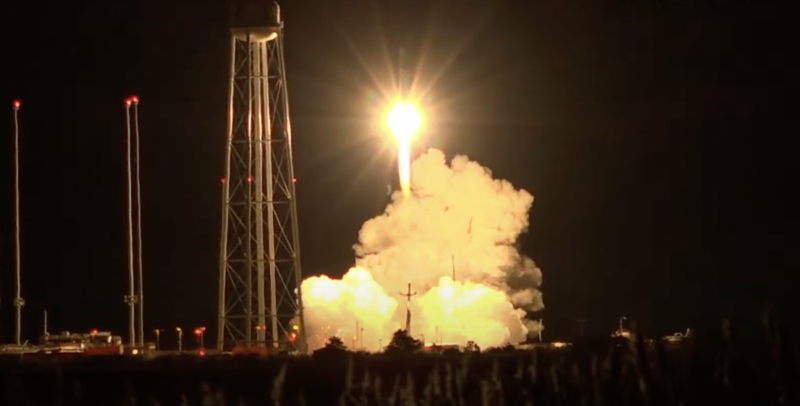
Wallops Flight Center, VA -- Off in the southwest, the last colors of sunset lit up the rim of the sky, as a crescent Moon and two planets lined up above. It was a gorgeous scene, but one that everyone was ignoring. Instead, all eyes were focused on a bright patch of artificial light on a barrier island a couple of miles away. The lights there were focused on a small, slender needle—small enough to be hauled to the launch pad by a pickup truck.
For years, the Electron rocket and the company behind it had been stuck in limbo at the Virginia launch site, waiting on various approvals—for regulatory agencies to share enough paperwork with each other to convince everyone that the launch was safe. Then weather and the end-of-year holidays kept pushing the launch back. But on Tuesday, everything went as smoothly as it is possible to imagine, and the Electron shot to orbit almost as soon as the launch window opened.
The launch is critical for Rocket Lab, which in some ways invested the future of the company in its Virginia operations. But it's also critical for the launch site, which is billed as a spaceport but hasn't seen much traffic leaving Earth.
About that launch
The Electron is a relatively small rocket, capable of putting only a few hundred kilograms into orbit, so the launch experience is very different from massive vehicles like the Shuttle, SLS, and Falcon Heavy. It's quite a bit smaller than even the Falcon 9. So the launch experience is correspondingly different from what I'd heard from others about what experiencing a rocket launch is like. (My only prior experience was a vaguely remembered one over 40 years ago.)
While the electron was still visible from two miles away as flames first appeared underneath it, it quickly vanished as it left the launch pad, the bright flames were quickly all you could see thanks to the nighttime launch. Around the same time, the sound arrived from the launch pad two miles away. The best description I've read compared it to the noise of tearing fabric shifted to bass registers. On a heavy enough rocket, the bass is powerful enough to create a physical sensation; Electron lacked that punch.
Its low weight also meant Electron left the pad in a hurry. Heavy launch vehicles often seem to hesitate shortly after leaving the pad, leaving my mind struggling to accept that their acceleration is enough to send them off to space. If Electron had an equivalent moment, it was over just as soon as it began.
From there, the launch benefitted from the dry, cold, and impossibly clear skies that feature prominently in East Coast winters. Things went dark as the main engines shut down, but a bit of light quickly returned as the second-stage engine took over. The second stage remained dimly visible to the naked eye until a couple of minutes before it shut down, too. During this time, a couple of objects were briefly visible below the second stage—likely the first stage and/or fairings catching the last of the sunlight at altitude or heating up in the atmosphere.
Later reports indicated that the three satellites on board had separated successfully and had established communications with their operator, Hawkeye360, which will use them to track radio sources on Earth.
reader comments
38